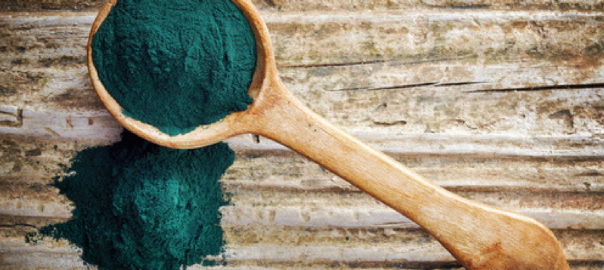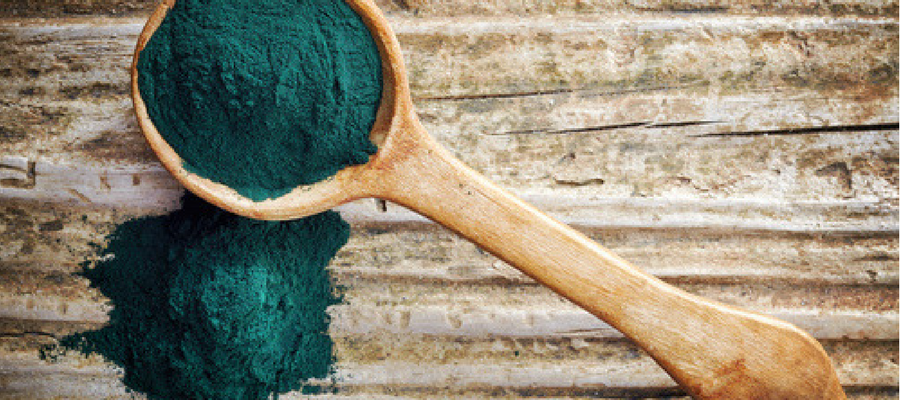Spirulina is often referred to as blue-green algae (although it's really a cyanobacterium). Either way, it's also a popular health food. And one that actually lives up to its hype.
Spirulina Nutrition
Commercial varieties are grown in fresh warm waters. However, spirulina traditionally grew under extreme conditions, such as in volcanic lakes. Thus, it has developed quite the nutrient profile.
Spirulina is approximately 60% protein. And the protein is highly digestible for optimal absorption and utilization.
However, you'd have to eat roughly 3.5 tablespoons to obtain the same amount of protein as one chicken drumstick (the minimum recommended amount of protein per meal). Therefore, it's best to be used as a protein booster as opposed to your primary source of protein.
Spirulina is often considered nature's multi-vitamin. It's packed with essential vitamins and minerals. In fact, it has:
- 180% more calcium that milk - for healthy bones, teeth, muscles, nerves and heart
- 3100% more vitamin A (as beta-carotene) than carrots - for healthy skin and eyes
- 5100% more iron that spinach - to produce healthy red blood cells
Other high concentration micronutrients (along with a few of their key health benefits) include:
- Vitamin K: important for blood clotting as well as heart and bone health
- B Vitamins: necessary to produce energy and red blood cells
- Choline: supports liver function, metabolism, brain development and energy levels
- Magnesium: calms nerves and anxiety and releases muscle tension
- Phosphorus: supports healthy bones and organs and balances hormones
- Iodine: essential for optimal thyroid function
- Potassium: regulates fluid balance and blood pressure
Spirulina also contains anti-inflammatory Omega-3 fatty acids and gamma-linolenic acid (GLA) as well as potent antioxidants, such as zeaxanthin and various carotenoids.
Potential Health Benefits
Based on its nutrient profile, it makes sense why there are over 1,000 studies investigating spirulina's potential benefits. A review of human and animal research suggests it may offer the following health-promoting properties:
- Antioxidant
- Anti-inflammatory
- Anti-cancer
- Immune-boosting
- Promote a healthy gut flora
- Balance lipid levels
- Balance blood sugar
- Reduce blood pressure
- Protect the heart
- Relieve allergy symptoms
- Detoxify heavy metals
Now that's a pretty powerful list of potential advantages! Which is why I hope you'll give it a try.
Simple Ways to Add Spirulina to Your Diet
You can buy spirulina in either a powder or tablet form.
The easiest way to incorporate spirulina powder into your diet is by adding it to your smoothies. However, you can blend a little into many other foods as well, including:
And because spirulina is so nutrient dense, you only need a little to reap its rewards.
[expand title="Sources"]
References
- Capelli, B., & Cysewski, G. R. (2010). Potential health benefits of spirulina microalgae*. Nutrafoods,9(2), 19-26. doi:10.1007/bf03223332
- Cheong, S. H., Kim, M. Y., Sok, D., Hwang, S., Kim, J. H., Kim, H. R., . . . Kim, M. R. (2010). Spirulina Prevents Atherosclerosis by Reducing
Hypercholesterolemia in Rabbits Fed a High-Cholesterol Diet. Journal of Nutritional Science and Vitaminology,56(1), 34-40.
doi:10.3177/jnsv.56.34
- Ichimura, M., Kato, S., Tsuneyama, K., Matsutake, S., Kamogawa, M., Hirao, E., . . . Omagari, K. (2013).
Phycocyanin prevents hypertension and low serum
adiponectin level in a rat model of metabolic syndrome. Nutrition Research,33(5), 397-405. doi:10.1016/j.nutres.2013.03.006
- Parikh, P., Mani, U., & Iyer, U. (2001). Role of Spirulina in the Control of Glycemia and Lipidemia in Type 2 Diabetes Mellitus. Journal of Medicinal Food,4(4), 193-199. doi:10.1089/10966200152744463
- Sayin, I., Cingi, C., Oghan, F., Baykal, B., & Ulusoy, S. (2013). Complementary Therapies in Allergic Rhinitis. ISRN Allergy,2013, 1-9.
doi:10.1155/2013/938751
[/expand]



